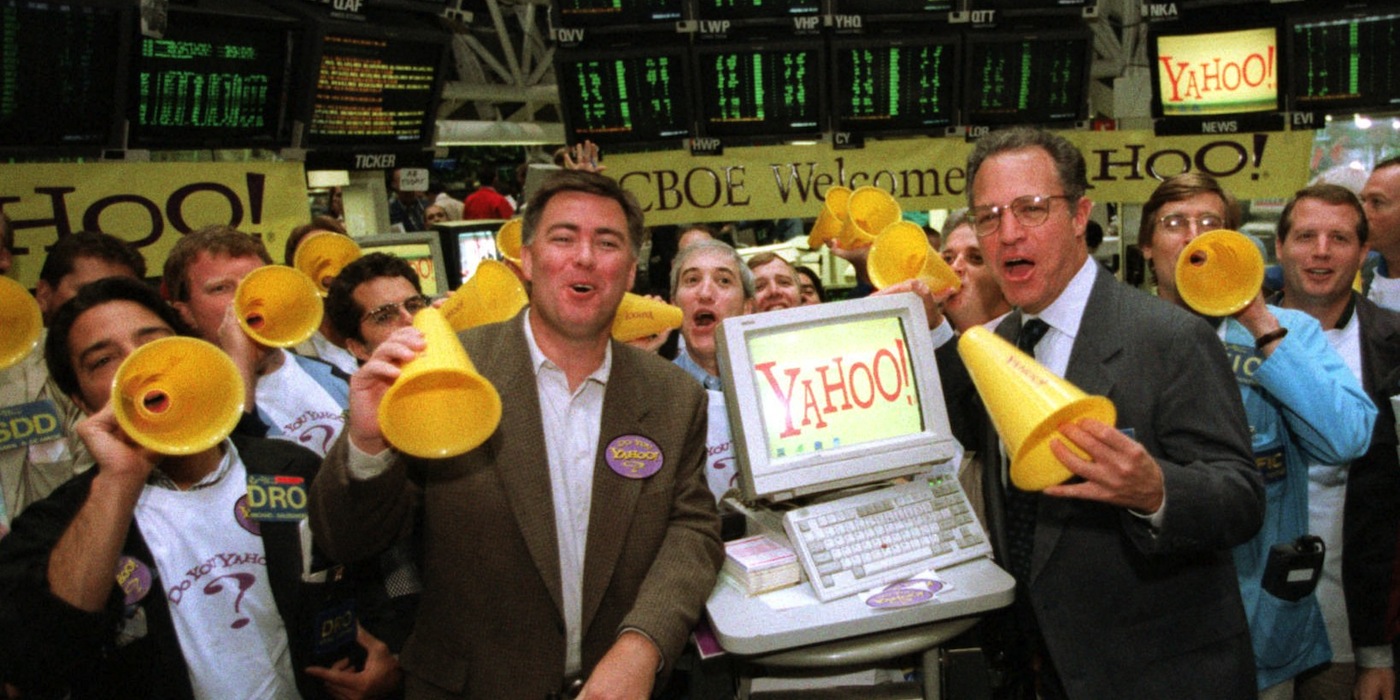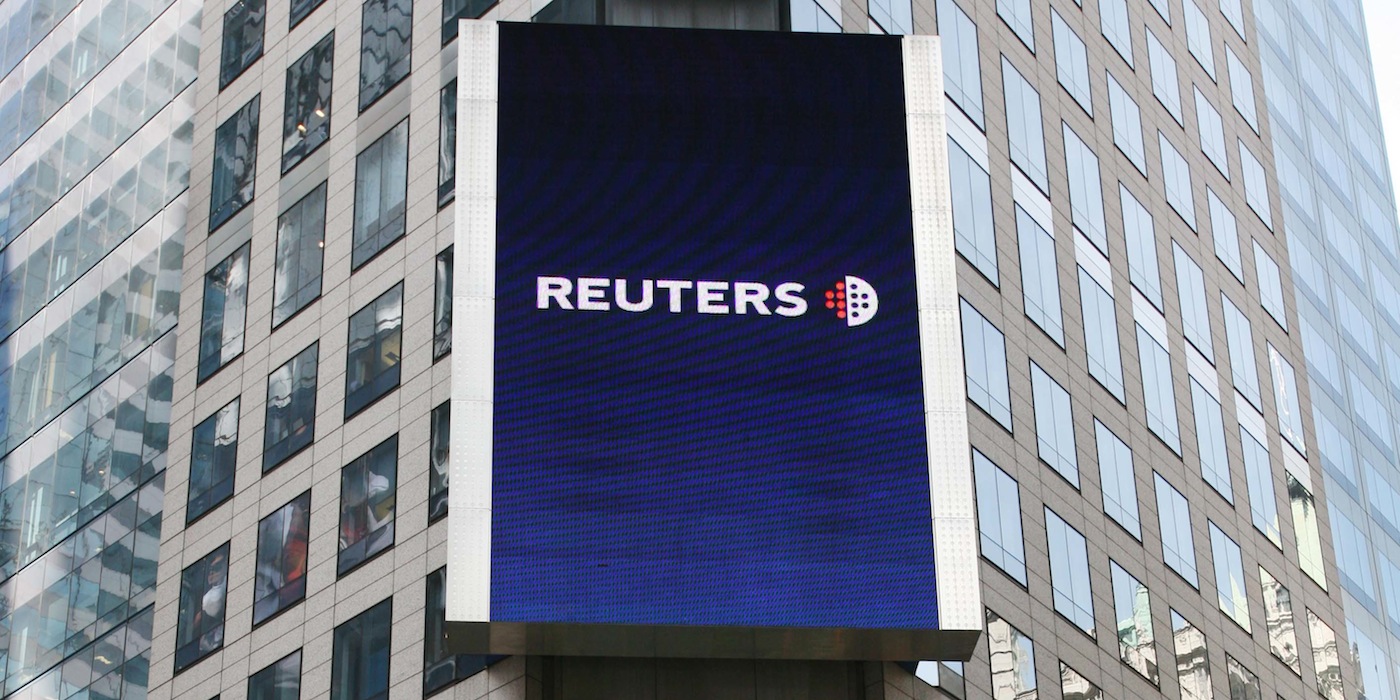Chapter 4
The Original Sin

When we encountered Yahoo, the only real differentiated insight that we may have had at Sequoia was that we believed in the notion that if a substantial audience is built for a site on the Internet, then with time, it should be possible to attract advertisers.
People in the investment world, in the venture world and elsewhere, got all tangled up in the conundrum of whether or not it was possible to have a business that on the surface gave itself away for free to consumers. Our assumption all along was that Internet sites were no freer for consumers than network television or broadcast radio, which, in retrospect, seems straightforward, very evident, [and] extremely apparent. But for whatever reason, it perplexed a lot of people. Don’t forget, there was no history in Silicon Valley — perhaps outside of AOL, which was not really considered a Silicon Valley company because its center of gravity was in the East….
One of the things that comes up as a theme in our interviews is [this notion of Original Sin] that Yahoo managed to get access to Reuters and the AP pretty early. They packaged content that had been coming to the consumer indirectly through broadcast and print channels and brought it directly to the user in a very updated way and created, in a sense, a superior free service to the legacy services that thought they should be paid for their content. Yahoo News, in a sense, set the stage. It became very large very quickly because of the size of the portal. It set the stage for the rest of journalism to go free. Do you disagree with that?
Best as I recall, at the beginning there wasn’t a purposeful desire to get into the news business. I think it was very much the result of the fact that Reuters at that point had a corporate venture that was quite active, run by a thoughtful person. They had identified Yahoo, and I think also [the portal site] Excite, and had made small investments in both. We had said to them, “As a result of the investment, there’s got to be something more than money. We need some sort of relationship. Can we package and distribute the news and information that you provide on the Reuters wire?”
That was what led to the beginning of the news business. The news business, in and of itself on the Internet, has not been a great business. It’s been a very useful service for consumers, but there are many other ways far more profitable for companies like Yahoo and Google and others to build large sales volumes than trying to sell advertisements around news and information.
I think to some extent it was a little accidental that we got into the news business. When Jerry and David were first talking about the site, news — certainly current news — was never on the road map. It came about like so many things on the Internet, accidentally and opportunistically.
One of the earliest investors and board members at Yahoo was Art Kern, a former broadcast executive who had sold his radio stations and was looking for something new in Silicon Valley.
Mike [Moritz] called me up and said, “I’d like you to meet these guys.” I said, “What’s the business?” He said, “I can’t really tell you that much, other than it’s a directory for this new thing, the web. You’ll just have to come down and see these guys.” So I drove to the Valley and met Tim Koogle [CEO], Jerry Yang and David Filo. And Jeff Mallett [an early employee and the president and chief operating officer], actually. I came away from that meeting feeling like, “This is very different in every respect.”

Graves, along with two other executives, John Taysom and Andrew Nibley, first spearheaded an investment in Yahoo by Reuters in the early 1990s. After that, Reuters started putting its news on Yahoo, and did it in part for an entirely novel reason — to help protect its investment in the fledgling technology company even as Reuters hoped to build significant new licensing revenue streams. Later, Graves would move to the Bay Area to become head of media at Yahoo.
We had just reached agreement to put a couple of million dollars into a little company called Yahoo, pre-IPO. As a concession for us doing this really risky investment, they agreed that Reuters would have exclusive rights to provide content to Yahoo for five years, in terms of what content we had. If Yahoo wanted a news product or a financial news product, they had to come first to Reuters and say, “Do you have this?” Then if we didn’t, they could go buy it from someone else.
Of course, every time they came and asked for something, if we didn’t have it, we figured out how to make it. “Oh yeah, we have that.” We created things that we didn’t have before. U.S. sports and a lot of other things like that….
So we sold these online reports, which were 10 stories that updated themselves. It was a kludgy, black-tape system. But it worked. We had our normal wire stories, and then an online editor would pick 10 of them and put them in order. Then we would send out a file with the code numbers of those 10 stories, called a link file. So if we put in a new lead story — a big important story — it instantly, within seconds, became the lead story on Yahoo….
There were only two news employees at Yahoo: One was a producer, and one was a feed handler, a technician guy.
There was never any question of charging users for content because Yahoo wanted to increase its audience as quickly as possible.
We were very successful in terms of page views, but not money. Because the Yahoo deal was a rev[enue] share. What I later learned, when I went to Yahoo…is that you do rev shares until there’s actually rev, and then you change it to a license….
Explain the business rationale for Reuters doing this on a rev share?
The strategy was that Yahoo didn’t have any money. We did own part of it. We wanted to see more value. But it was really more, Yahoo did all their deals that way for content.
So clearly the consumer was voting to say, “I like the most updated news” from the outset. You were a part of that. I’m just wondering. The consumer says, “I like this product.” But Yahoo is saying, “Great, we’re going to make it for free.” I assume to get advertising?
Let’s take it in stages. For the first part of the Internet, your stock valuation was driven by your audience size because nobody was making any rational decisions about what things were worth. So for some number of years all you cared about was how many millions of people were clicking on Yahoo in a given month.
Fifty thousand a day kept getting added. So Yahoo wasn’t going to do anything that was going to interfere with the metric that was driving their stock, which at that point was audience. Certainly any kind of pay situation would’ve interfered with that thing. At one point I proposed [when I was at Yahoo]…that we offer a version of Yahoo for a buck a month that had no banners. “Let them put their money where their mouth is.” Here’s what I was told: Yahoo’s audience was skewed toward heavy users. Ten percent of our users did 90 percent of our clicks at one point. The person who explained this to me said, “If any significant portion of them decides to opt for the one dollar, it will take so many page views out of our ad inventory….”
Remember, the company’s really a financial news company. Their biggest businesses were foreign currency trading. Media’s a small part of that…
And Reuters didn’t have any real U.S. revenue. Didn’t have any U.S. retail revenue. We had 20, 30 newspapers who were rich enough to have both wire services. We had NBC was our biggest partner. We sold all the TV companies at the time. CNN was a big customer, obviously…
We had nothing to lose, at that point. It was a chance for Reuters to expand. We did end up generating substantial revenues, globally, with the online news reports because our strategy for sales was called “Yahoo envy.” We would create a product, put it on Yahoo and immediately someone would call us from Excite saying, “How come we don’t have that?”
This is a hypothetical, but had you not taken the quick money from Yahoo and built Reuters.com in 1993 or 1994, could it have become Yahoo Finance? Or didn’t you have the culture inside Reuters to do that?
There were those who wanted to do that. In fact, I was more in that camp because I came from the retail world. I was from broadcasting. I was consumer facing. But remember, Reuters was a wholesale operation in the media business….They’d always sold their pictures to newspapers and magazines. They’d sold their wire services to newspapers. Their television was uplinks and reports. We sent raw footage that NBC and others edited into pieces with their own reporters in front of it. So they were most comfortable with the wholesale approach, even to new media.
It was The Reverse [Innovator’s Dilemma]. It’s what freed you, I think, at Reuters to do these deals no one else would because you never saw yourself as a retailer.
Right. We didn’t see us as competing against ourselves.
Reuters did well with its Internet investment precisely because it was not competing for American consumers in its main business. Because of that lack of conflict, the company was able to pursue free content online without threatening its protected revenue stream from its financial news. As we see shall see, CNN was in a similar position: Its main business was fueled by cable fees, which allowed the cable giant to find a new audience online without the threat of cannibalizing itself. Newspaper subscription revenues were disrupted by news organizations that had no stake in the consumer paying for news; on the contrary, the prevailing market incentives motivated companies like Yahoo to go free, to build the largest possible base of users.
Around this same time, Matt Drudge was developing another form of free news service with his Drudge Report, which would later become a model for other “branded” bloggers who wanted to aggregate content from a number of other news sources — think Arianna Huffington and Andrew Sullivan.
Drudge used the essential power of HTML to “link out” to the rest of the web. His effort began as a subscription email newsletter in 1996 and later became a popular website. Today, it is fashionable among news providers to talk about “curation” or the idea of editing the web. Matt Drudge was, arguably, the original curator.


